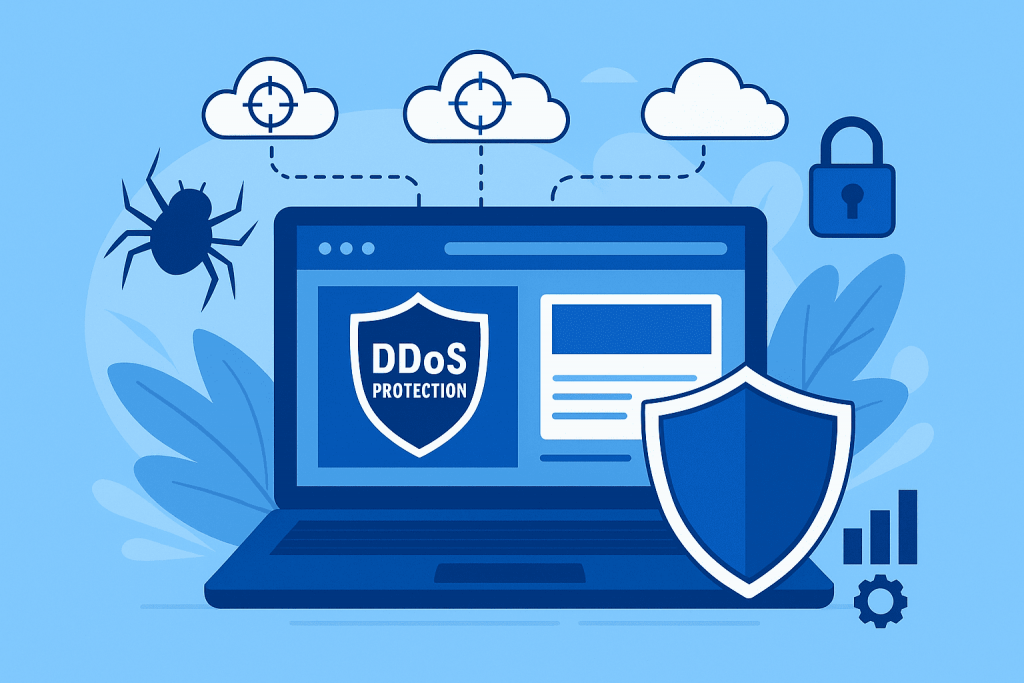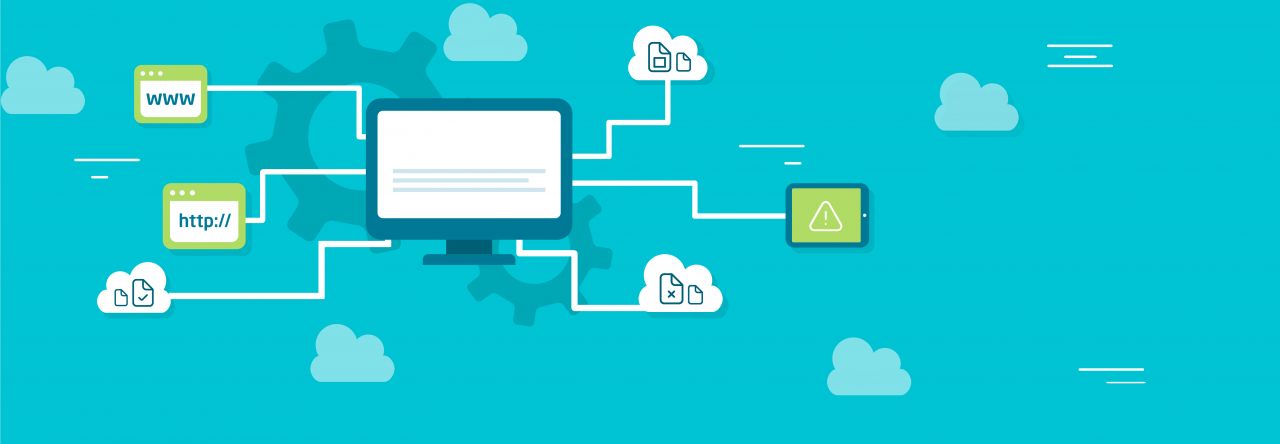
In today’s world of online business, the threat of DDoS attacks is more relevant than ever. These attacks can completely paralyze a website, disrupt planned sales, undermine customer trust, and even lead to serious financial losses. In this article, we’ll look at what a DDoS attack is, how it works, who is most often targeted by attackers, and most importantly — how to effectively protect your website.
What Is a DDoS Attack?
DDoS (Distributed Denial of Service) is a type of cyberattack where a massive amount of fake traffic is sent to a website from thousands of infected devices or bots to overload the server. As a result, the site becomes very slow or completely unavailable to normal users.
Imagine this:
You have a coffee shop with 10 tables. Suddenly, 500 people come in and take up all the space without ordering anything. Meanwhile, your real customers can’t get in and leave disappointed. That’s how a DDoS attack works.
DDoS attacks can last from several minutes to several days, causing not only financial damage but also reputational harm — especially critical for websites with steady traffic and online sales.
Who Can Be Targeted by DDoS Attacks?
- Online stores — especially during promotions and sales
- News portals — before publishing high-profile content
- Business websites — targeted by competitors or dishonest partners
- Political platforms — during elections or protests
- IT companies — as a result of extortion or hacktivism
Attackers choose targets that have something to lose. The more a company depends on its online presence, the more attractive it becomes for attackers.
How to Identify a DDoS Attack
Key signs of a DDoS attack include:
- Your website suddenly becomes very slow or completely inaccessible
- A sharp increase in traffic from suspicious sources
- High server load with no clear reason
- User complaints about errors or timeouts
- Notifications from your hosting provider about unusual activity
Sometimes these symptoms may resemble normal technical issues, so it’s important to use monitoring systems.
7 Ways to Protect Your Website from a DDoS Attack
1. Use Hosting with DDoS Protection
The first and easiest step is to choose reliable hosting with DDoS protection. All RX-NAME plans include basic protection and offer advanced options for enhanced security. This allows you to focus on growing your project without worrying about uptime.
2. Implement a CDN (Content Delivery Network)
CDNs like Cloudflare distribute traffic across servers in different countries, reducing load on your main server and enabling faster responses to anomalies. Most CDNs also come with built-in filtering tools for malicious traffic.
3. Set Up a Web Application Firewall (WAF)
WAFs filter suspicious requests before they reach your website. On RX-NAME’s VPS servers, you can configure a personalized firewall tailored to your business needs.
4. Limit Requests Per IP
Set request limits — for example, no more than 10 requests per second from a single IP address. This is effective against bots and automated scripts. Modern systems let you configure these limits based on user behavior.
5. Monitor Traffic in Real Time
Monitoring tools help detect suspicious activity before your site goes down. Use built-in solutions from your hosting provider or third-party services like Zabbix, Grafana, or New Relic. Consistent monitoring brings peace of mind.
6. Use VPS or a Dedicated Server
With a VPS or dedicated server, you get full control over security, logs, WAF settings, and traffic filtering. This greatly reduces the risk of a successful attack compared to shared hosting. Upgrading to a VPS is a smart investment as your traffic grows.
7. Keep Your CMS and Plugins Updated
Timely updates of WordPress, Joomla, Drupal, and other CMSs are vital for cybersecurity. Outdated software is easy to hack. Use only trusted plugins and themes, and check for updates regularly.
What to Do During a DDoS Attack
- Notify your hosting provider — RX-NAME’s support team is available 24/7 and responds quickly to incidents.
- Activate security tools — enable maximum protection settings in your CDN and WAF.
- Change your IP address — in case of a severe attack, move your site to a new server with a different IP.
- Analyze logs — this helps identify the source of the attack, block IPs, and strengthen defenses.
- Notify your users — if you run a business, inform customers via social media or email about the technical issues. This helps maintain trust in your brand.
Tips for the Future
- Create an incident response plan — include contacts of your tech team, responsible staff, and step-by-step instructions.
- Regularly back up your website — in case of data loss, you’ll be able to restore it quickly.
- Use SSL certificates — while they don’t protect against DDoS, they improve overall website security.
- Enable two-factor authentication for CMS administrators — this makes unauthorized access more difficult.
Conclusion: Prevention Is the Best Strategy
DDoS attacks are a serious threat, but with the right tools, you can not only survive them but also build stronger protection for the future. Take care of your website’s security in advance and be confident in the stability of your online business.
Looking for reliable hosting with DDoS protection? Choose RX-NAME. — we’ll take care of your project’s security so you can focus on growing your business!

Leave a Reply